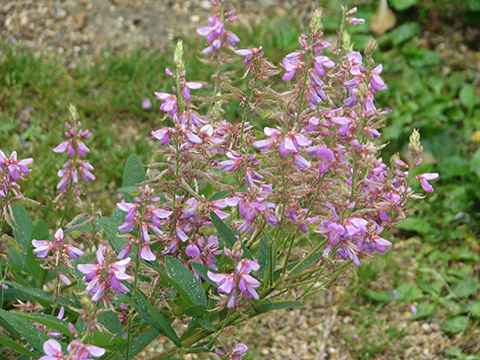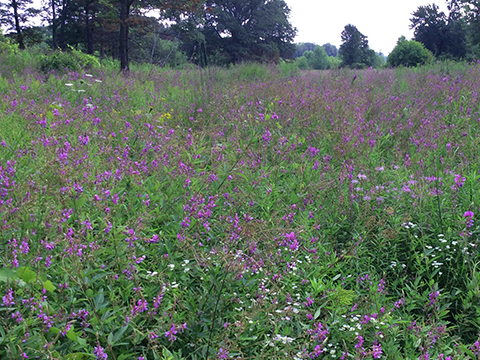
Habit: Showy tick trefoil is a long-lived perennial with a deep tap root that allows it to survive drought, browsing and periodic fire. Native to all states in the northeast.
Showy tick trefoil is an important pollinator plant. Long-tongue bees, bumblebees, miner bees, leaf-cutting bees, and some short-tongued bees can be found working the flowers. Hummingbirds also frequent the brightly colored blooms.
Seeds are covered with hooked hairs that cause the seed to stick to clothing or fur as the primary seed dispersal mechanism. Seeds are an important food source for larger birds such as Ruffed grouse and Wild turkey. Deer will browse the plant but some sources consider it semi-deer resistant. It is easy to establish and naturalize in the wild from seed. It will spread readily by natural seed dispersal mechanisms.
Desmodium canadense will grow in a wide range of habitats. It is adaptable to soil types and moisture levels. It typically favors moist to medium soils such as those found along riverbanks, lake edges, and wet meadows. It can also be found in open woods, rocky and sandy prairies, roadsides and disturbed areas. Showy Tick Trefoil is a common herbaceous plant of the well-drained sandy soils of the Albany pine bush where great swaths of pink flowers can be seen.

Flowers of Showy Tick Trefoil

Field of Showy Tick Trefoil in Albany Pine Bush